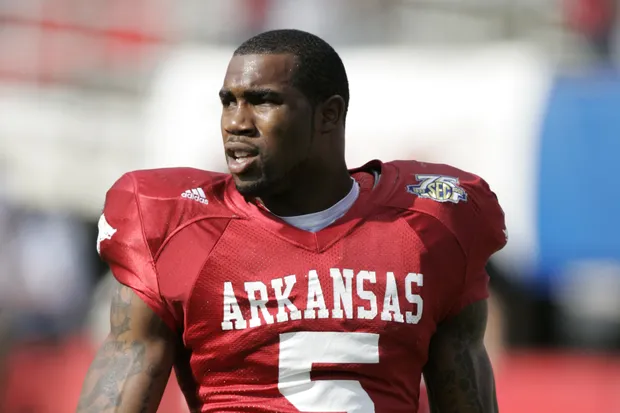Breaking News: NFL Coaches Discuss League-Wide Changes Amid Offseason Reshuffles………
Breaking News: NFL Coaches Discuss League-Wide Changes Amid Offseason Reshuffles………
February 8, 2025
New York, NY – As the NFL heads into the 2025 offseason, discussions among head coaches, executives, and analysts have intensified around potential league-wide changes and shifts in the landscape of professional football. These discussions, now taking place behind closed doors, have brought forward new ideas that could change the way teams approach not only player development but also team management, game strategy, and the overall direction of the league.
At a series of private meetings earlier this week, key head coaches from across the NFL sat down with league officials to talk about pressing issues such as the evolution of the game, player health, and the financial sustainability of franchises. With the NFL at a critical juncture—following several controversial player health incidents, significant shifts in team rosters, and fluctuating television revenue—these conversations are expected to shape the future of the sport for years to come.
The Rising Influence of Analytics in Coaching Strategy
One of the central themes of the discussions was the growing reliance on analytics and data in football coaching and decision-making. Over the last decade, NFL teams have increasingly embraced advanced statistics and performance metrics in hopes of gaining a competitive edge, and head coaches are divided on how far they should allow analytics to influence their strategies.
“You can’t ignore the numbers,” said Coach Mark Jennings of the Seattle Seahawks, who has been one of the loudest proponents of data-driven football. “Whether it’s third-down conversion rates, defensive coverage efficiency, or even player health data, the information is out there, and we have to use it. But it’s also important to keep the human element—players aren’t robots, and sometimes the numbers don’t tell the whole story.”
Other coaches, such as Greg Robinson of the Buffalo Bills, have raised concerns that analytics are overemphasizing mathematical models over traditional football instincts. “There’s no substitute for experience,” Robinson said. “We’ve been coaching football for decades without all these fancy algorithms. I think it’s important to balance the data with what you see on the field. Coaches have to trust their gut and their years of experience.”
The debate between the old guard and new-age thinkers is a microcosm of the larger tension within the NFL. The future of coaching in the league could very well hinge on how teams manage this delicate balance between numbers and the human factor. Coaches who rely too heavily on data might find themselves alienating players, while those who ignore the analytical advantage may miss out on crucial insights that could win games.
Player Health: A Growing Concern
Another significant topic that has dominated NFL coaching discussions is the health and safety of players. In recent years, the league has been under increased scrutiny for its handling of player injuries, particularly concussions and long-term brain health. Some head coaches, especially those whose teams have experienced high injury rates, are pushing for more stringent rules to protect players, while others argue that the league should look for new ways to help players recover and avoid injuries altogether.
Coach Laura Mitchell of the Atlanta Falcons, one of the league’s only female head coaches, has been vocal about the need for enhanced concussion protocols and improved medical staffing. “We owe it to the players to ensure that their health is our number one priority. It’s not just about winning games—it’s about winning the right way. That means making sure these players aren’t putting their futures on the line every Sunday.”
Some coaches are looking toward technology for solutions. NFL teams have begun experimenting with wearable tech that tracks players’ movements, heart rates, and fatigue levels in real time. The hope is that this data can help prevent injuries before they happen and allow teams to optimize recovery times. However, there are concerns about the privacy of players’ health data and whether this technology will truly provide long-term solutions or simply serve as another layer of analysis for coaches and managers to digest.
The Changing Landscape of Team Building
Team construction is also a central point of discussion in NFL head coach meetings. With the rise of player empowerment and increasing player movement, the traditional method of constructing a team—relying on the draft and making long-term investments in star players—has come under question. Coaches are increasingly looking at new ways to build their rosters, whether through trades, free agency, or other creative means.
The idea of “positionless” football is gaining traction. Teams are experimenting with flexible players who can take on multiple roles, allowing coaches to adapt to different styles of play as needed. For example, versatile linebackers who can drop into coverage and rush the passer or running backs who can act as wide receivers are becoming more common in NFL offenses. Some coaches believe that by building hybrid players, teams can be more adaptable and harder to predict.
“I think we’re seeing a shift in how we think about roster construction,” said Coach Michael Thomas of the Miami Dolphins. “The game is evolving, and the days of relying solely on traditional positions are behind us. We’re looking for players who can do more than one thing well, players who can change the course of a game in unexpected ways.”
This “positionless” strategy could help teams build more fluid and dynamic rosters while also adding depth to their lineups. The challenge, however, lies in coaching these players to be effective in different roles, requiring a new approach to training and player development.
Financial Sustainability: A Growing Challenge
Another key issue on the table during these discussions is the growing financial pressures on NFL teams. The league has always been a cash cow, but with the rise of player salaries and the increased cost of running a franchise, many head coaches are wondering how sustainable the current model is in the long run. Some have suggested that the league needs to explore new revenue streams, such as expanding international games or leveraging new broadcast technologies.
Coach Daniel Perez of the Denver Broncos is among those who have spoken out about the rising costs of team operations. “The reality is that salaries are rising, but TV revenue is plateauing,” Perez said. “As teams, we have to figure out how to stay competitive while maintaining financial responsibility. It’s a fine line, and I think the league will need to innovate in ways that we haven’t yet considered.”
While the NFL is still one of the most profitable sports leagues in the world, the rising costs of player salaries and team operations are creating pressure for both coaches and owners. New revenue opportunities, such as expanded global partnerships and technological advancements, may offer potential solutions, but the league’s financial future is uncertain.
Conclusion: The Future of NFL Coaching
As the NFL prepares for a new season, the future of the league remains a topic of intense debate among coaches, executives, and analysts. The coaching community is divided over the role of analytics, player health protocols, roster construction strategies, and financial sustainability. With each team looking to stay ahead of the curve in this rapidly evolving league, the next few years could be transformative for the NFL.
While some of the proposed changes may be met with resistance from traditionalists, others believe these shifts are essential for the long-term success and health of the sport. The outcome of these discussions will likely define the NFL’s trajectory in the coming decade, shaping how teams are built, how players are managed, and how fans experience the game.
In the end, the game of football will continue to evolve, and coaches will remain at the center of that transformation—adapting to new challenges, embracing innovation, and striving for victory in a constantly changing landscape. The 2025 season promises to be one of change and reinvention, as the NFL enters a new era of football.













Post Comment